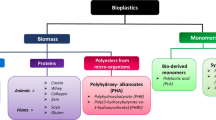Abstract
The removal of multiphase, multicomponent soils from fibrous substrates depends upon the nature of the soil mixture, the order of application, wash temperature, and type of detergent formulation. By studying these factors, we investigated the synergism between residual oil (triolein) and particulate soil (clay) on a durable press polyester/cotton fabric after laundering with four different detergents at wash temperatures of 27 and 49 C.
To probe the interaction between clay and oil, fabric specimens were soiled with clay only, triolein only, clay followed by an application of triolein, and triolein followed by an application of clay. Four detergent formulations were used to launder the soiled fabrics, including one unbuilt liquid and three powdered detergents with different builder systems. The amount of residual oil (triolein) was determined by radiotracer technique, and the quantities of clay were determined by measuring aluminum by neutron activation. Reflectance measurements were used to calculate fabric whiteness. The soil distributions on and within the textile structure were obtained by scanning electron microscopy using backscattered electron images, secondary electron images and X-ray mapping. Osmium tetroxide was used to tag the oil, while silicon was the elemental tag for clay in the microscopic analysis.
Results of the four factors studied can be summarized as follows. (i) In agreement with observations by previous researchers, a mixture of clay and oil is more difficult to remove than either the oil or the clay applied singly. It appears that oil acts as a matrix to bind clay, forming a composite soil. (ii) The specimens that were soiled first with oil and then clay had more soil removed by laundering than the specimens soiled with clay and then oil. Detergency was limited by the encapsulation of clay by the oil and adsorbtion of oil by the clay. (iii) The built powdered detergents were temperature sensitive, while the unbuilt liquid detergent was not. (iv) The built powdered detergents removed more soil (oily and clay) than the unbuilt liquid detergent.
Similar content being viewed by others
References
Schott, H., inDetergency — Part I: Theory and Test Methods, edited by W. Cutler and R. Davis, New York: Marcel Dekker, Inc., 1972, pp. 153–235.
Billica, H.,Textile Res. J. 36:857 (1966).
Fort, T., H. Billica and C. Sloan, Ibid.:7 (1966).
Powe, W.,J. Am. Oil Chem. Soc. 40:290 (1963).
Gordon, B., J. Roddewig and W. Shebs, Ibid.:289 (1967).
Harker, R.,J. Text. Inst. 50:T189 (1959).
Powe, W.,Textile Res. J. 29:879 (1959).
Kissa, E., Ibid.:621 (1971).
Morris, M., and H. Prato, Ibid.:280 (1982).
American Association of Textile Chemists and Colorist Technical Manual. Research Triangle Park, NC, Test Method 110–1979 (1985).
Netzel, D., C. Stanley and D. Rathburn,J. Am. Oil Chem. Soc. 41:678 (1964).
Obendorf, S., and N. Klemash,Textile Res. J. 52:434 (1982).
SAS User’s Guide, edited by J. Helwig and K. Council, SAS Institute, Inc., Raleigh, North Carolina, 1979.
Scott, B.,J. Appl. Chem. 13:133 (1963).
Obendorf, S., and J. Webb,Textile Res. J. 57:557 (1987).
Webb, J., and S. Obendorf, Ibid.:640 (1987).
Cowan, D., inDetergents in Depth, ′80, A Symposium Sponsored by the Soap and Detergent Association, Fairmont Hotel and Tower, San Francisco, CA, April 10–11, 1980, pp. 49–54.
Morgenthaler, W., inDetergency — Part II: Theory and Tests Methods, edited by W. Cutler and R. Davis, Marcel Dekker, New York 1975, pp. 454–502.
Dillon, K., E. Goddard and D. McKenzie, D.J. Am. Oil Chem. Soc. 57:230 (1980).
Obendorf, S.,Text. Chem. Color. 20:11 (1988).
Author information
Authors and Affiliations
About this article
Cite this article
Webb, J.J., Obendorf, S.K. Detergency study of the synergism between oily and particulate soil on polyester/cotton fabric. J Am Oil Chem Soc 65, 1357–1364 (1988). https://doi.org/10.1007/BF02542422
Received:
Accepted:
Issue Date:
DOI: https://doi.org/10.1007/BF02542422




